Thesis & Background
For my project I have chosen to focus on photographer Vivian Cherry and her photobook Helluva Town.
Vivan Cherry grew up in the Bronx, New York as the daughter of Russian Jewish immigrants. After suffering an injury that forced her to take a break from her career as a dancer, she got a job printing photos and eventually turned towards photography. Many of her photos of New York City are compiled in her photobook, Helluva Town.
In this interview with B&H Photo Video she talks about her work capturing the streets of New York City.
Cherry was a member of the New York Photo League. While part of the collective, she met the photographer and teacher Sid Grossman, who would become her mentor. She documented ordinary people amid the swirl of city life; one of her best-known photo series is of commuters traveling to and from work on the Third Avenue El, a subway line that got its name for running above ground down third avenue through the Bronx and Manhattan. That series is presented in two parts: photographs from the active train line and the latter showing men at work dismantling that train line in 1955.
Cherry frequently photographed children at play on the streets of New York City. In the late 1940s she documented violence in children’s games. The series was published by ’48 Magazine of the Year; Photography republished them in 1952, commenting, “The pictures are not pretty, but they do represent an attempt to . . . use a camera as a tool for social research.” Cherry had also submitted them to McCall’s, a women’s magazine, which rejected them as “a little too real for magazine use.”
Talking about her iconic photograph Game of Lynching, taken in East Harlem, New York Cherry remarked: “I was horrified, so I watched it and I photographed it, they’d have heard about it on the radio or from their parents – that was the period of lynching, that violence was their reality.” During a talk in 2011 at B & H Photo in Manhattan, she spoke further about it, saying “There were no lynchings in New York” at that time, “but there they are, playing that game, and it didn’t matter if they were black or white.” The pervasive effects of racial terror in the United States was a theme that was of great concern to the leftist Cherry and her colleagues at the Photo League.
With World War II raging across the Atlantic Ocean, Cherry realized it was more important to focus on what was happening in real life.- “I decided that I’d rather have reality at that time,” Cherry said. In her photos in NYC that she compiled in Helluva Town, Cherry focuses on themes such as the interaction of women and men and children playing in the street. Mostly, she uses the book to emphasize the mixture and diversity of New York.
Cherry’s themes of diversity and interaction between people and their surroundings in The Big City work as a social commentary on the life and times of the people. The subjects of her photographs are not just people, but they are the stories and backgrounds of the people that are thought-provoking.
Methodology
Vivian Cherry took photos on the streets of NYC. As a street photographer, she had almost no time to make decisions regarding the composition of her photographs. The timing of Cherry’s photographs was based on instinct. She pointed her camera and immediately shot anything she found interesting. She attempted to take photos of people without them noticing. “As soon as people see a camera, they change, and what you see you lose”, she once said.
Her mentor at the New York Photo League was Sid Grossman. She drew inspiration from favorite photographers Helen Levitt, Dorothea Lange, Paul Strand and Fons Iannelli .
She took photos with a Graflex camera. Cameras manufactured by Graflex were typical press cameras because of the fast shutter speed and lighter weight than most other cameras at the time. Those qualities make it ideal for a street photographer like Cherry.
Cherry made a point of photographing working-class people. Specifically, she took her camera into neighborhoods that tended to be ignored by most photographers. I plan to do this in NYC by traveling to residential places in Brooklyn and in my neighborhood, the Upper West Side of Manhattan. While there I will try to emulate Cherry’s content including photos of children playing in the street. Something that she often did was bring the camera down to the level of the children. She also was one of the first female street photographers to capture the thronging masses and restlessness of “the concrete jungle.”
When I took photos on the streets of NYC, I tried to emulate the spontaneity and authenticity of Cherry’s photos by not composing an image before taking it. Rather, I followed my instinct and the sounds and sights of the city to capture the modern and raw state of NYC.
Her physical method of coming close to the subjects she is photographing created an overall greater sense of personality in her subjects than I was able to achieve. A lot of her photos were not candid and had the subjects looking directly into the camera. I was able to get some of those photos, like this one of a woman on the subway watching me photograph a family of children traveling together without their parents – another theme that often appears in Cherry’s work.

Photo Analysis
Analysis:
I learned a lot about Vivian Cherry’s experience and process when I stepped into her shoes taking photographs in Manhattan. I felt similar to her as a young woman exploring a socioeconomically different neighborhood with a camera. Mostly, I was observant of how much NYC has changed. I realized that it’s hard to capture similar scenes as Cherry did in the 1950s, even though it is the same city. I tried to take candid pictures of working-class people, like in Cherry’s well-known work, but I found that people were much more aware of me with a camera and clearly expressed discomfort at having their photo taken. I even had a couple of people heckle me that they didn’t want their picture taken. Even people who weren’t in the subject line of my lens were watching me as I photographed. I experienced the instincts of a street photographer in being able to predict and capture a moment before it’s too late.
As I worked, I had to evolve my approach from my original idea. As I tried to emulate the images in Helluva Town, I realized that there were fundamental differences between my work and the work in her book. First, I noticed that I wasn’t able to get as close to my subjects as Cherry did. Her work in Helluva Town shows a lot of detail in people’s faces through which we can learn about her subjects. Because people responded reluctantly to my photographing them, I wasn’t able to capture the faces of my subjects to the extent that Cherry did. Like Cherry, I attempted to capture the life of Manhattan children and their innocence and independence. I paid special attention to their interactions with each other and with adults.
I think these differences stem from the fact that New York and society have changed. Modern people have adverse reactions to having their photograph taken and it is uncommon to find children in NYC without adults.
I think I did a good job of capturing the diversity of New York City in terms of factors like race and class, which is one of the main themes Cherry conveys in Helluva Town. I did this by venturing out into different neighborhoods, like the Lower East Side, where Cherry often photographed, and Chinatown, which has a high immigrant population, something that is repetitive in Cherry’s work.
Ultimately, from my experience taking photographs, I think I managed to effectively capture Cherry’s message about the eccentricities of New York City and its people but I struggled to achieve her style due to technological and cultural differences.
Gallery:
Selected Photos:

The first photo I chose to analyze is this man, covered up and taking a nap on a park bench. What drew me to him was his attention-grabbing colorful flower bouquet juxtaposed with his all-black outfit and backpack. Just as the bouquet stands as a stark contrast to the rest of his ensemble, he also is distinct from the rest of the people in the park. For me, this is reminiscent of a Cherry photograph because such a statement feels almost rebellious and political. His presence is mysterious and begs more questions about where he came from and who he is.

The other photograph of mine that I wanted to examine in depth is this one of a man and his family getting off the subway. They are getting off the subway at the 81st and Central Park West station on the Upper West Side of Manhattan, indicating that they came from elsewhere. The carts they are dragging are full of plastic light-up toys that they will sell on the street to tourists and parade watchers. This photograph showcases the working class, immigrant culture in New York City, and the journey of this man and his family to make a profit from an annual gig.
Slideshow Comparing My Photos and Cherry’s Photos:










Conclusion
Helluva Town is “a body of work done over a half a century by a gifted artist, who represents the countless photographers who turned us into a nation of observers” says Barbara Head Millstein, Curator of photography at Brooklyn Museum where Cherry’s work is exhibited.
Vivian Cherry is an incredible street photographer because of her ability to capture the interactions and relationships of people in New York City. The masses and groups of people that she often presented captures their interactions with each other but also the world. The emphasis of diversity in her photographs plays an important role in analyzing the physical and relationship structures of the people.
“The desire for social change and a belief in photography as an expressive medium that could mirror social problems and promote social change became the League’s guiding principles”. Cherry manifested that social agenda though her work. Her left wing jewish background affects the way she sees social interactions that she captures and the themes that she wants to highlight through her work. Also her background as a dancer contributes to her perception of the choreography of the street.
My admiration for Cherry increased after I went out to take photos for my assignment. The thing I noticed the most was how her point of view was unique as a woman. It felt strange for me to be alone photographing people, and must’ve been even more scandalous for her to be photographing as a woman in the mid 19th century. What gave me comfort, though, was the strength I felt by being armed with my camera. The ability to capture my surroundings and write my own narrative through images, even though I was trying to emulate Cherry’s, was empowering.
Sources
Sources:
https://www.nytimes.com/2019/03/14/obituaries/vivian-cherry-dead
http://liberatinglens.org/course/778/







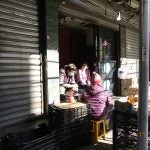
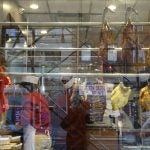


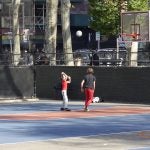

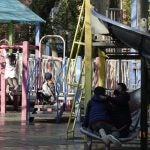



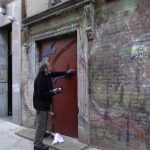
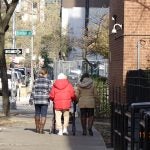





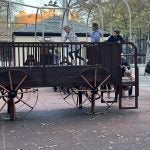

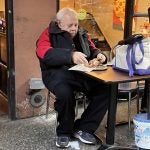

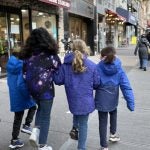



Anabelle,
This is a lovely discussion of Vivian Cherry, her background, and her book, Helluva Town. You obviously read interviews with Cherry so you need to reference those sources when you quote her. Please put a link so that a reader can follow it. It would be good if you could connect the children’s games with the 3rd Avenue El photos. What drew Cherry to both of these to photograph them? Is it a desire to use the camera for social research as your quote from Cherry suggests?
DDM
Anabelle,
I’m not sure that the methodology that you are suggesting for Cherry and for yourself is going to work in NYC. Cherry made a point of photographing working-class people. That means that she did not go to midtown or even the financial district but specifically took her camera into neighborhoods that tended to be ignored by most photographers.
What neighborhoods will you visit to photograph? Will you go to the Bronx? Or to Queens? Or to Washington Heights? I think where you choose to photograph will be equally important as how you will photograph.
DDM
Anabelle,
Yes, it’s really hard to get close enough to have the photograph work. You’re right that things have changed. But Cherry also asked people to take their photo on occasion. Not every photo was candid. And she mingled. I think that your pairings work well, especially the subway photographs. (If the guy was sleeping, you could have photographed him from the front, not behind.) I think that the outdoor vendor is also good, and you surely could have come a bit closer.
You’ve done a very good job.
DDM